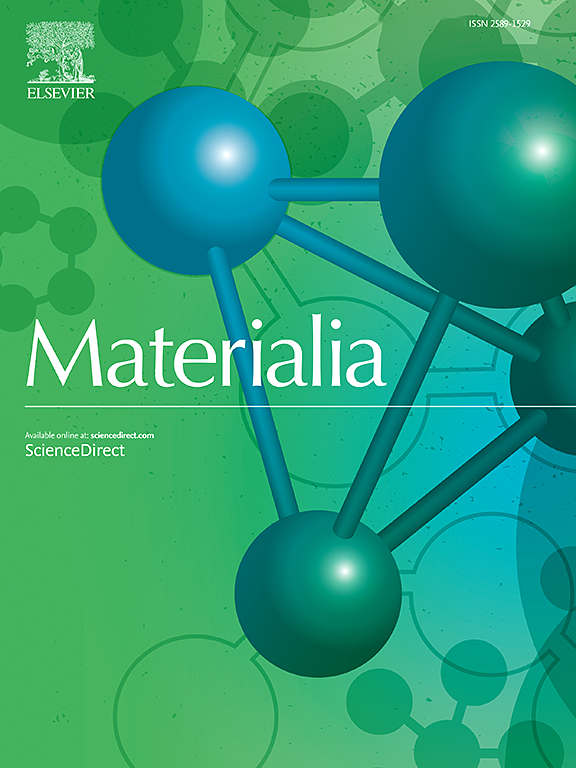Controlling mechanical properties of laser powder bed fused AlSi10Mg through manipulation of laser scan rotation
IF 3
Q2 MATERIALS SCIENCE, MULTIDISCIPLINARY
引用次数: 0
Abstract
The microstructure and mechanical properties of laser powder bed fused (LPBF) AlSi10Mg alloys can be controlled by many processing parameters. This study focuses on the scan rotation angle, α, between adjacent layers, and establishes the relationship between α and tensile behavior of the as-built LPBF-processed AlSi10Mg alloy. Near-full density cubic coupons were manufactured using the same processing parameters but with systematic variation of α from 0° to 90°. Microscopic observations and X-ray diffraction analysis showed that differences among various coupons mainly include orientations of the melt pools with respect to the build direction and development of the crystallographic texture. The α=0° coupon and α=30° coupon showed the highest and lowest texture index, although the overall crystallographic texture was mild. Tensile specimens were manufactured horizontally and vertically using either α=0° or α=30°, but with various first layer laser direction with respect to the build plate. Notably, the α=0° specimen that was tested along the laser scan direction showed the largest yield strength (283 MPa) and highest tensile ductility (10.1 %). Quantitative image analysis and fractography were performed on all specimens. Results showed that the melt pool orientation with respect to the tensile direction affected the tensile behavior across the different specimens. This was closely related to the localized strain distribution within the melt pool and along the melt pool boundary for the different melt pool orientations observed. These results demonstrate that the laser scan rotation angle between layers can be used to fine tune the mechanical properties of LPBF AlSi10Mg alloy.

求助全文
约1分钟内获得全文
求助全文
来源期刊

Materialia
MATERIALS SCIENCE, MULTIDISCIPLINARY-
CiteScore
6.40
自引率
2.90%
发文量
345
审稿时长
36 days
期刊介绍:
Materialia is a multidisciplinary journal of materials science and engineering that publishes original peer-reviewed research articles. Articles in Materialia advance the understanding of the relationship between processing, structure, property, and function of materials.
Materialia publishes full-length research articles, review articles, and letters (short communications). In addition to receiving direct submissions, Materialia also accepts transfers from Acta Materialia, Inc. partner journals. Materialia offers authors the choice to publish on an open access model (with author fee), or on a subscription model (with no author fee).
 求助内容:
求助内容: 应助结果提醒方式:
应助结果提醒方式:


